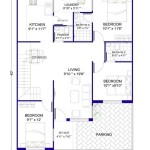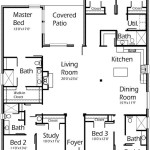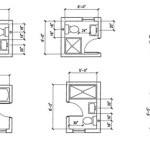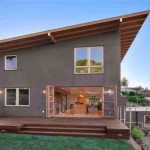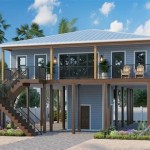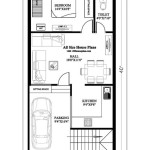House Plans Building Cost Estimates: A Comprehensive Guide
Building a house is a significant investment, and understanding the associated costs is crucial for a successful project. A key element in managing these costs is accurately estimating the building expenditures based on the chosen house plans. This article will delve into the factors influencing house plans building cost estimates, providing a detailed overview of the processes and considerations involved.
Accurate cost estimation allows homeowners to make informed decisions regarding their budget, design choices, and potential modifications. It helps avoid unexpected financial burdens and ensures the project remains within manageable limits. Furthermore, well-defined cost estimates facilitate effective communication with contractors, architects, and other stakeholders involved in the construction process.
The process of estimating building costs related to house plans is complex and requires careful attention to detail. Numerous variables contribute to the final figure, ranging from the size and complexity of the design to the materials used and the prevailing labor rates in the region. Therefore, a thorough understanding of these factors is essential for developing a reliable and realistic budget.
Factors Influencing House Plans Building Cost Estimates
Several key elements contribute to the overall building cost estimate. These factors need to be carefully assessed and quantified to arrive at a realistic projected expenditure.
1. Size and Complexity of the House Plan: The square footage of the house is a primary driver of cost. Larger homes inherently require more materials, labor, and time to construct. Similarly, the complexity of the design plays a significant role. Intricate architectural features, such as multiple stories, complex rooflines, custom windows, and elaborate trim details, will increase the overall expense. Non-standard designs often necessitate specialized labor and custom-fabricated materials, further impacting the budget. Conversely, simpler, more standardized house plans generally result in lower construction costs due to economies of scale and reduced labor complexity.
The number of bedrooms and bathrooms also contributes to the complexity. Each bathroom and kitchen requires extensive plumbing, electrical, and finishing work. Multiple stories necessitate additional structural support and staircases, adding to the material and labor costs. Open floor plans might appear simpler, but they often require more robust structural support systems, such as load-bearing beams, to compensate for the absence of interior walls, which can increase structural engineering and material costs.
2. Materials Used in Construction: The choice of building materials significantly impacts the overall cost. The price of lumber, concrete, steel, roofing materials, and finishing products can fluctuate based on market conditions and availability. High-end materials, such as imported tiles, exotic hardwoods, or energy-efficient windows, will increase the budget considerably compared to standard options. Material selection is a nuanced area; while choosing less expensive materials might initially reduce costs, it could potentially lead to higher maintenance expenses or reduced durability in the long run.
Beyond the aesthetic considerations, the environmental impact and performance characteristics of materials should also be evaluated. Sustainable building materials, such as recycled content products or locally sourced lumber, may have a higher initial cost but can offer long-term benefits, including lower energy consumption and a reduced carbon footprint. Similarly, opting for durable and weather-resistant materials can minimize future repair and replacement costs.
3. Labor Costs and Regional Variations: Labor costs represent a significant portion of the overall construction budget. These costs vary considerably depending on the region, the availability of skilled workers, and the prevailing wage rates. Areas with a high cost of living typically have higher labor rates. Furthermore, the expertise and experience of the construction crew will influence the project's labor costs. Hiring licensed and insured contractors and subcontractors typically results in higher labor costs, but it also provides assurance of quality workmanship and adherence to building codes.
Regional variations also extend to building codes and permitting requirements, which can indirectly affect labor costs. Complying with stringent building codes may necessitate specialized labor or techniques, adding to the overall expense. Additionally, the time required for inspections and approvals can impact the project timeline and increase labor costs. Engaging local contractors who are familiar with the regional building regulations can help streamline the permitting process and minimize potential delays.
Methods for Estimating Building Costs
Several methods are employed to estimate building costs, each with its own level of accuracy and complexity. Understanding these methods helps in selecting the most appropriate approach for a given project.
1. Square Foot Method: The square foot method is a relatively simple and widely used approach. It involves multiplying the total square footage of the house by a cost per square foot figure that is derived from historical data or industry averages for similar projects in the same geographic area. This method provides a preliminary estimate and is useful for initial budget planning. However, it is less precise than other methods because it does not account for variations in design complexity, material choices, or site conditions. The accuracy of the square foot method depends heavily on the reliability of the cost per square foot figure used. Factors such as the level of finishes, structural intricacies, and landscaping details are not typically considered in this estimation, making it a generalized cost projection rather than a detailed itemization.
2. Quantity Takeoff Method: The quantity takeoff method is a more detailed and accurate approach. It involves a thorough analysis of the house plans and a quantification of all materials and labor required for each aspect of the construction. This method requires a high level of expertise and detailed knowledge of construction practices. The quantities of materials are then multiplied by their unit prices, and the labor hours are multiplied by the hourly rates to arrive at a total cost. Adjustments are made for waste, contingencies, and contractor overhead and profit. The accuracy of the quantity takeoff method is directly related to the thoroughness and precision of the takeoff process.
A quantity takeoff breaks down the project into discrete components, such as concrete work, framing, roofing, plumbing, electrical, and finishing. Each component is then further divided into individual tasks, and the quantities of materials are calculated based on the dimensions and specifications indicated in the house plans. For example, the quantity of concrete required for the foundation is determined by multiplying the length, width, and depth of the footings. Similarly, the amount of lumber needed for framing is calculated based on the spacing and dimensions of the studs, joists, and rafters. This level of detail provides a more accurate and reliable cost estimate, but it also requires significantly more time and effort.
3. Parametric Estimating: Parametric estimating uses statistical relationships and historical data to predict costs based on key parameters, such as the size, location, and complexity of the project. This method involves analyzing past projects to identify cost drivers and develop mathematical models that can be used to estimate the costs of future projects. Parametric estimating can be useful for early-stage planning and feasibility studies, but it requires a substantial database of historical cost data. The accuracy of parametric estimates depends on the quality and relevance of the data used to develop the models.
The statistical relationships used in parametric estimating are often based on regression analysis, which identifies correlations between cost and various project parameters. These parameters could include square footage, number of rooms, types of materials, or geographic location. The models are then calibrated using historical data to ensure that they accurately reflect the prevailing market conditions. While parametric estimating can provide a relatively quick and efficient way to generate cost estimates, it is important to validate the results with other methods, such as the square foot method or the quantity takeoff method, to ensure that the estimates are reasonable and realistic.
Strategies for Managing Building Costs
Effective cost management is essential for keeping a building project on budget. Several strategies can be employed to minimize costs without compromising quality.
1. Value Engineering: Value engineering is a systematic process of analyzing the design and construction methods to identify opportunities for cost reduction without sacrificing functionality or performance. This involves evaluating alternative materials, construction techniques, and design features to find the most cost-effective solutions. Value engineering should be conducted early in the design phase to maximize its impact. For example, changing the roof design from a complex hip roof to a simpler gable roof could significantly reduce material and labor costs without affecting the structural integrity or aesthetic appeal of the house.
2. Competitive Bidding: Obtaining multiple bids from qualified contractors and subcontractors is a crucial step in cost management. Competitive bidding ensures that the homeowner receives the best possible price for the work while maintaining quality. Each bidder should be provided with the same set of house plans and specifications to ensure that the bids are comparable. It is important to thoroughly vet the bidders to ensure that they are licensed, insured, and have a proven track record of successful projects. The lowest bid should not always be the deciding factor; the qualifications, experience, and reputation of the contractor should also be considered.
3. Phased Construction: Phased construction involves breaking the project into smaller, more manageable phases, such as site preparation, foundation work, framing, roofing, and finishing. This allows the homeowner to prioritize the phases based on their budget and timeline and to make adjustments as needed. Phased construction can also help to mitigate risks and reduce the impact of unexpected delays or cost overruns. It also enables the homeowner to secure financing in stages, which can be advantageous for projects with limited initial capital. However, phased construction requires careful planning and coordination to ensure that each phase is completed on time and within budget. Delays in one phase can have a ripple effect on subsequent phases, potentially increasing overall costs.
4. Contingency Planning: Unexpected costs and challenges are inevitable in any construction project. A contingency fund should be included in the budget to cover unforeseen expenses, such as changes in material prices, weather delays, or unexpected site conditions. A contingency of 5-10% of the total project cost is generally recommended. This fund provides a buffer to absorb unexpected expenses without derailing the project. It is important to track how the contingency fund is spent and to make adjustments to the budget as needed. If the contingency fund is not needed, it can be used to upgrade finishes or add other features to the house.

How Much Does It Cost To Build A House Or Extension Estimating Costs For Domestic Building Projects Harvey Norman Architects Cambridge Bis Stortford Saffron Walden Residential Cambridgeshire Architect

House Cost Estimator To Build A Home Building

New Home Construction Costs By The Numbers

What Is Cost Estimation Of 3bhk Building For 1850 Sft Slab Area

Building Estimates

House Construction Cost Calculator Engineering Feed

Home Building Cost Estimate Spreadsheet Laobing Kaisuo Costs A House Template

Estimating Building Costs

What Is Cost Estimation Of 3bhk Building For 1850 Sft Slab Area

Home Cost Forms For Construction And Loan Draws

